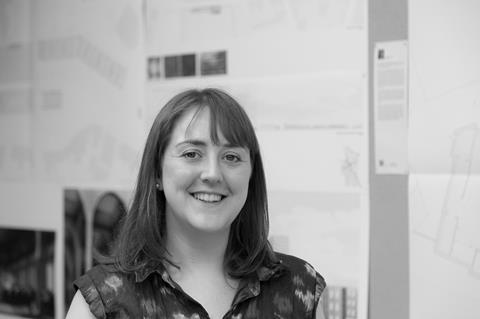Workplace inequality comes in many forms, says Eleanor Jolliffe

The second annual gender pay gap figures are beginning to trickle in and, for those reporting so far, it seems that not much has changed. The figures suggest women are still paid less overall.
This result isn’t necessarily surprising and, for all the reasons I discussed last year, I’m still fairly unconcerned about it.
As a snapshot of where the profession currently sits, the Arb register is creeping towards a 70:30 split (26% female in 2016; 27% female in 2017). And the RIBA 2017 Chartered Practices report notes that 37% of people employed by chartered practices are women.
Perhaps more relevant as an indication of the future is that new applications to join the register are 61% male and 39% female. This more closely mirrors UCAS’ latest application figures, which state that 58% of applications to “architecture, building and planning” subjects are male. Broadly this suggests that a female graduate is about as likely as a male graduate to register with the Arb having started part I (I say “suggests” as the more readily available data paints with rather broad brushstrokes).
However, as far as the gender pay gap data is concerned it is hard to draw meaningful conclusions about the profession as a whole because it paints a picture of such a minority of the profession.
Referring again to the RIBA Chartered Practice summary for 2018, there are 27,200 staff employed at practices of fewer than 100 people and just 12,000 employed by practices of more than 100. Only practices with more than 250 staff need to report their gender pay gap. And, according to BD’s latest annual World Architecture WA100 survey, there are only four UK practices in that position. This means pay gap data relates to less than 5% of the UK’s 41,000 architects.
However you look at this data it can’t give more than an indication of the firm in question. Last year the RIBA encouraged all practices to declare their pay gaps but, perhaps understandably for individuals’ privacy, most haven’t.
Additionally I struggle not so much with the figures themselves but with the data’s narrow focus: they only report on one indicator of success. Admittedly salary is by far the easiest and most universal demonstration of worth to compare across the UK workforce but personally I would weight relevant and varied experience, quality of life, working environment and level of responsibility rather heavily when considering my own future (though salary is not insignificant – I do live in London).
I knew when I entered this profession that I would be in the minority gender-wise and as most of my meetings are with engineers and builders I long ago stopped finding it remarkable to be the only woman in the room. Largely I have stopped noticing – but I have been lucky enough never to have (knowingly) faced discrimination at work. Anecdotally I have heard of enough cases to make me lose faith in our collective humanity.
However, the particularly significant elephant always present in this room is children, an area which seems to stack the dice against both mothers and fathers in some way. I have seen several friends go on maternity leave over the last couple of years, all fully intending to be back at work within six or seven months, their lives unchanged. Some have managed this, others have extended their maternity leave, a few have left the profession altogether. My sister (who is not an architect) is currently re-entering the workforce after the birth of her first child. Her priorities have shifted because her perspective has shifted. She isn’t interested in promotions at the moment. Her career may be “suffering” but her quality of life has significantly increased.
Nevertheless, I also think the system as it stands doesn’t really favour fathers either. I know my brother-in-law struggled immensely to return to work two weeks after the birth of his child as if nothing had changed. Some research indicates that the birth of a child can have as significant a hormonal shift in the father as the mother. In a perfect world fathers might be given equal time off for childcare, acknowledging that children need fathers as well as mothers. Macro-economically this is far from ideal. To suggest it’s a good idea for potentially the whole workforce to take this level of career break as we teeter on the edge of significant economic uncertainty might be deemed reckless.
Despite my qualms, the gender pay gap figures are useful in raising the issue of workplace inequality in our collective consciousness and addressing issues that can be tricky to tackle. I just believe we should be cautious about allowing our analysis of this issue to start and stop at who gets paid what.
On a related note, when I see a pay gap report suggesting significant gender inequality at a company I always wonder what other accidents of birth they deem to be slightly less than equal.
















3 Readers' comments